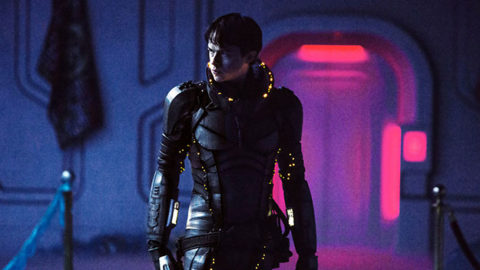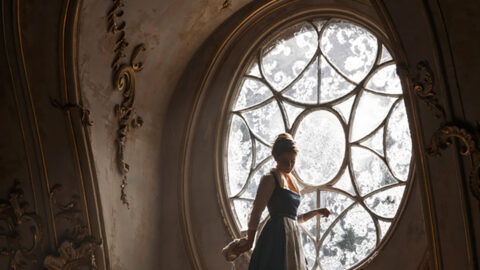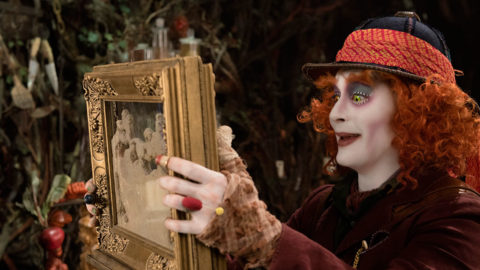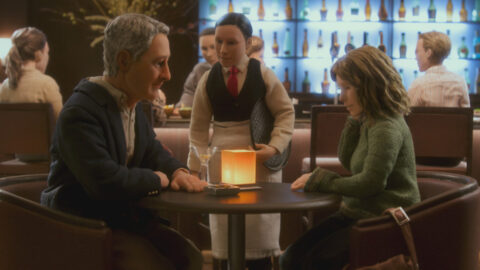Deep Focus: Welcome to Marwen
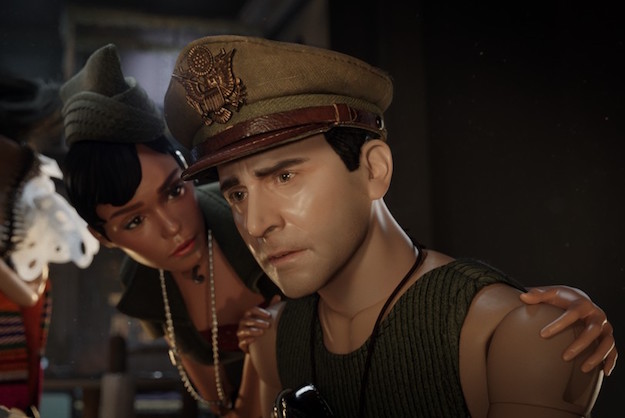
Robert Zemeckis is one of the few A-list writer-director-magnates who consistently strives to break new ground in technique and subject matter while mounting movies with the narrative sweep and color that can unite all sectors of an audience. His 2015 film about Philippe Petit’s breathtaking wire-walk at the World Trade Center, The Walk, was a triumphant collaboration between a moviemaker high on hope and adventure, and an actor, Joseph Gordon-Levitt (as Petit), who, in his own lithe, sly way, and with bursts of inspiration, summoned a comic daredevil performance comparable to any of Burt Lancaster’s. The Walk deserved to be a blockbuster and an award-winner: the most touching tribute imaginable to the Twin Towers. Yet it never gained traction in theaters. Too many critics voiced the familiar complaint, “It wasn’t as good as the documentary” (James Marsh’s justly acclaimed 2008 Man on Wire). But Zemeckis’s film does something the documentary couldn’t: it makes us feel as if we are living inside Petit’s vision and walking with him in mid-air.
Zemeckis’s latest feature, Welcome to Marwen, also “based on a true story” first told by a terrific 2010 documentary (Jeff Malmberg’s Marwencol), was written off before its opening because of poor test screenings. It has failed to attract audiences or many critical defenders. The movie isn’t in the same class as The Walk, but it’s a mini-epic curiosity and a pungent, heartrending salute to the inventive handicraft of self-taught artist Mark Hogancamp (Steve Carell). He fights his way back toward emotional and physical health by inventing his own form of art therapy after a near-fatal gang beating.
In his home in Kingston, New York, Mark buys commercial action figures and fashion dolls from the local hobby shop and reworks them into battle-hardened World War II fighters, including his alter ego, Cap’n “Hogie” Hogancamp, and Hogie’s voluptuous female commando team, almost all based on friends from real life. (He transforms his five attackers into ultra-vicious SS men.) To give them a space in which to live, he constructs a mythical Belgian village, “Marwen,” in his yard, on the appropriate 1:6 scale, erecting tiny-town buildings out of junked materials like scrap plywood. The dexterity and ingenuity required to costume, pose, and house these creations recharges Mark’s physical and mental reflexes and tests his perseverance. Learning how to photograph these mannequins for uncanny lifelike effects, in situations fraught with emotion and jeopardy, rouses his imagination.
A U.S. Navy veteran whose marriage fell apart and whose life became an alcoholic haze after he left the service in 1989, Hogancamp had always been a natural sketch artist and illustrator drawn to World War II themes. He was also a whiz at painting miniature military figures, which he sold to hobbyists. In the decade before the beating, he had scraped out a living as a kitchen worker at a Kingston bar and restaurant. Despairing of being intimate with a woman again, he satisfied his yen for a female presence by cross-dressing. As Chris Shellen and Hogancamp summarize in their book Welcome to Marwencol, “For nearly ten years, Mark’s life continued in this pattern—go to work, go home, get drunk, draw, dress up, pass out.” The movie emphasizes that his beating is a hate crime: the instigator freaked out when Mark drunkenly talked about wearing high heels. Is it a deliberate sadistic comment on his fetish or poetic injustice that the attackers do the worst damage when they stomp on his head with heavy boots? They leave him an amnesiac, unable to recall his adult life or master basic skills; he must learn to walk again. Along with us, Mark sees the incident unfold in stress-triggered flashbacks.
The challenge of the script Zemeckis co-wrote with Caroline Thompson (Tim Burton’s Corpse Bride, 2005) is comparable to the one he pursued in The Walk. The writer-director’s primary way of guiding us into Mark’s feverish mind as he conceives his blood-and-guts sagas is to animate the artist’s tableaux rather than arrange them as a photo-novel or fumetti stills, as in the “Marwencol Stories” section of the Welcome to Marwencol book. Zemeckis and his team employ multiple arts and technologies for this prodigious feat: motion-capture to exploit the live ensemble’s performances; advanced face and body scans to create their 3-D avatars; CG animation to merge the actors with their digital selves; and then the traditional crafts of costuming and set design, writ small, to project personalities and create an artificial yet lived-in environment true to Mark’s outsider perspective.
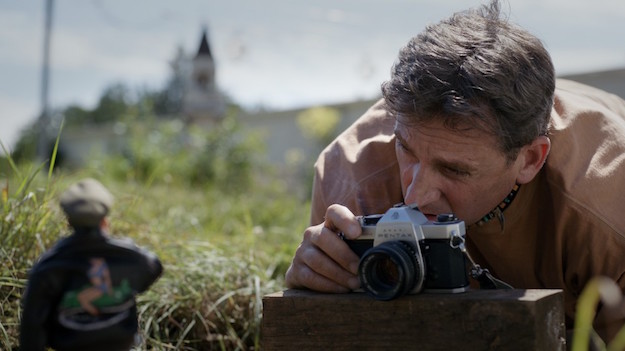
During the arresting opening—a nerve-rattling crash landing—we don’t realize that Hogie is a doll until we notice Carell’s too-taut skin and the otherworldly sheen on his flawless flight jacket. Mark generally ages the costumes and props to give them a weather-beaten look; presumably we’re witnessing the start of a fresh Cap’n Hogie adventure. Later, it’s a trip to watch the leggy, buxom “women of Marwen” parade as precisely as Rockettes down their muddy main street, dressed in military outfits, national costumes, or modified porno getups.
Hiding Molotov cocktails behind their backs and with guns at the ready, they advance on a church where the Nazis have been torturing Hogie. Jules (Janelle Monae), an army vet with a prosthetic leg, persuades Mark to embrace his pain in rehab, and in Marwen kicks fascist butt as GI Julie; similarly, his monthly caregiver, Anna (Gwendoline Christie), struggles to regulate his meds, and in his fantasy turns Red Army warrior; his favorite porn star, Suzette (played by the director’s wife, Leslie Zemeckis), represents the French Resistance; roadhouse cook Carlala (Eiza Gonzalez) pats together meatballs with Mark every Tuesday and shows up in Belgium as a flashing-eyed Latin fighter; Nicol (Leslie Mann), Mark’s new neighbor, intoxicates him with her prettiness and sweetness and becomes Hogie’s lover in his nightmare/dream world; and Roberta (Merritt Wever), the local hobby-store manager, rallies Hogie’s troops against the Nazis and proves to be the Kingston citizen who cares most deeply for Mark, looking out for his legal and artistic interests and helping him land a gallery show in Greenwich Village.
The story follows two arcs hinged to the latter two women: Mark misreads Nicol’s friendliness for romance, and Roberta and his lawyer (Conrad Coates) urge him to read a victim statement at his assaulters’ sentencing. (The real-life Hogancamp testified against them multiple times.) Most of the actors log more minutes in “Marwen, Belgium” than they do in Kingston, New York, but Wever’s robust empathy as Roberta, and Mann’s tender confusion as Nicol, help Carell anchor the film in a scruffy small-town reality.
The fantasy scenes boast clarity, oddball zest, and hyperbolic humor. They enlarge our understanding of Mark’s frustration and impulse for revenge. But at the same time they undercut our appreciation of the man as a meticulous, individualistic artist. Hogancamp’s photographs derive unique graphic power from their eerie immediacy. Somehow he manages to get the same effects with posed dolls that Cartier-Bresson does with street people at “decisive moments” or that Robert Capa does in war zones under the credo, “If your photographs aren’t good enough, you’re not close enough.” Working so near to his models that an excited breath would blow them away, Mark contorts his subjects’ bodies in torment and/or passion. He forces us to lean into them and connect with the feelings conjured by their plastic body language. In the feature, as in the documentary, we see Mark painstakingly maneuver their joints to put them into evocative positions. These rigid figures seem to strain against their anatomies to express hurt, pain, and longing, mirroring the artist’s own unrequited yearnings.
The movie’s animation, though, does not evoke that innate sense of strife. It’s more overt and single-minded about making Mark’s conflicts stick out in stark relief from the swashbuckling aspects of his artwork. Without the original photos’ layer of aesthetic intensity and mystery, the cartooning grows repetitive about its vengeful, wish-fulfillment quality. For a while, Zemeckis preserves the enigma of the darkly ethereal, turquoise-haired siren known as “the Belgian witch of Marwen” (Diane Kruger). She professes love for Hogie and destroys any woman who gets too close to him. Yet even she gets explained away as the closet-Nazi catalyst for all of Mark’s fears. Zemeckis has echoed magazine editor Tod Lippy’s contention that what’s bracing about Mark’s pictures is their utter lack of irony. So it’s woefully self-destructive that in his film Hogie’s cartoon bravado and the women’s swagger make Mark’s war stories register as irony personified—or “dollified.”
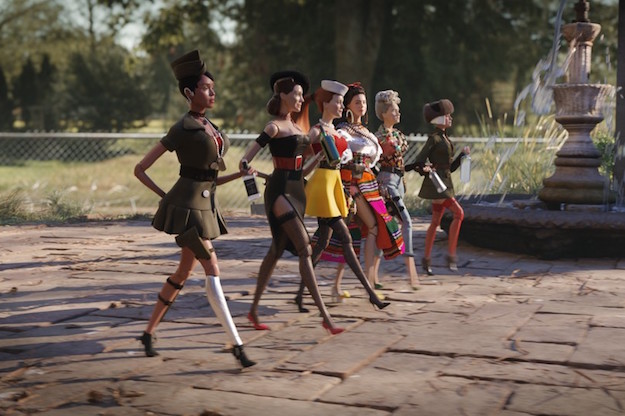
Welcome to Marwen peaks whenever the hero’s actual existence gets so unbearable that his imaginative life takes its place. He envisions Nazis assaulting him in his home and in the courtroom, and Hogie, his alter ego, speeds to the rescue. In these unnerving dramatizations of PTSD, Zemeckis’s and Hogancamp’s artistry merge for a potent unified effect. The weakest scenes feature Nicol’s macho, semi-stalker ex-boyfriend Kurt (Neil Jackson), who morphs into SS Major Meyer in Marwen. Zemeckis overstates Kurt’s menace—Nicol herself later shrugs him off—and he registers merely as a blood-red herring.
The script conflates and reorganizes real-life incidents, cuts Mark’s family from the narrative, and surrounds him with composite characters. His stint in the Navy and his marriage, his aesthetic experiments, and self-analysis go by in brief flips through scrapbooks and journals. The movie derives some free-spirited humor from his fixation on stilettos. It also reduces his cross-dressing to that love for high heels, and a longing glance at lingerie in a suitcase. (He also wears unisex necklaces.)
Carell generates an aura of angst and creativity that fills in the blanks. His gift for communicating roiling depths inside men with limited expression has never been more profound. We see Mark’s growing self-awareness and his idée fixe do battle in the flickering light behind his eyes. He puts across the heroism and unwitting comedy of the hero’s exacting artistic standards as he shambles along a tree-lined road, pulling a pool cue attached to a model WWII jeep filled with Hogie and his bad-ass female protectors. (Mark is happily obsessed with getting just the right amount of wear on the tires.) The unshowy urgency and richness of Carell’s performance hook us from the moment he crawls out from behind Mark’s battered Pentax camera after he shoots the crash-landing episode.
Mark’s crush on Nicol isn’t merely a virtuoso display of missed signals. Carell suggests levels of willful blindness and cunning in the man’s misguided courting. It’s hard to say which is more cathartic: his howl of despair over his loneliness or his climactic acceptance of the second life he has carved out for himself. Carell transforms Mark’s hard-won oasis of stillness in a battlefield of pain into a thing of tragic beauty.
The partnership between Zemeckis and Carell is as committed and intuitive as the bond the director forged with Gordon-Levitt on The Walk. It’s what keeps Welcome to Marwen from falling off its own high wire—and finally brings the movie home.
Michael Sragow is a contributing editor to Film Comment and writes its Deep Focus column. He is a member of the National Society of Film Critics and the Los Angeles Film Critics Association.



